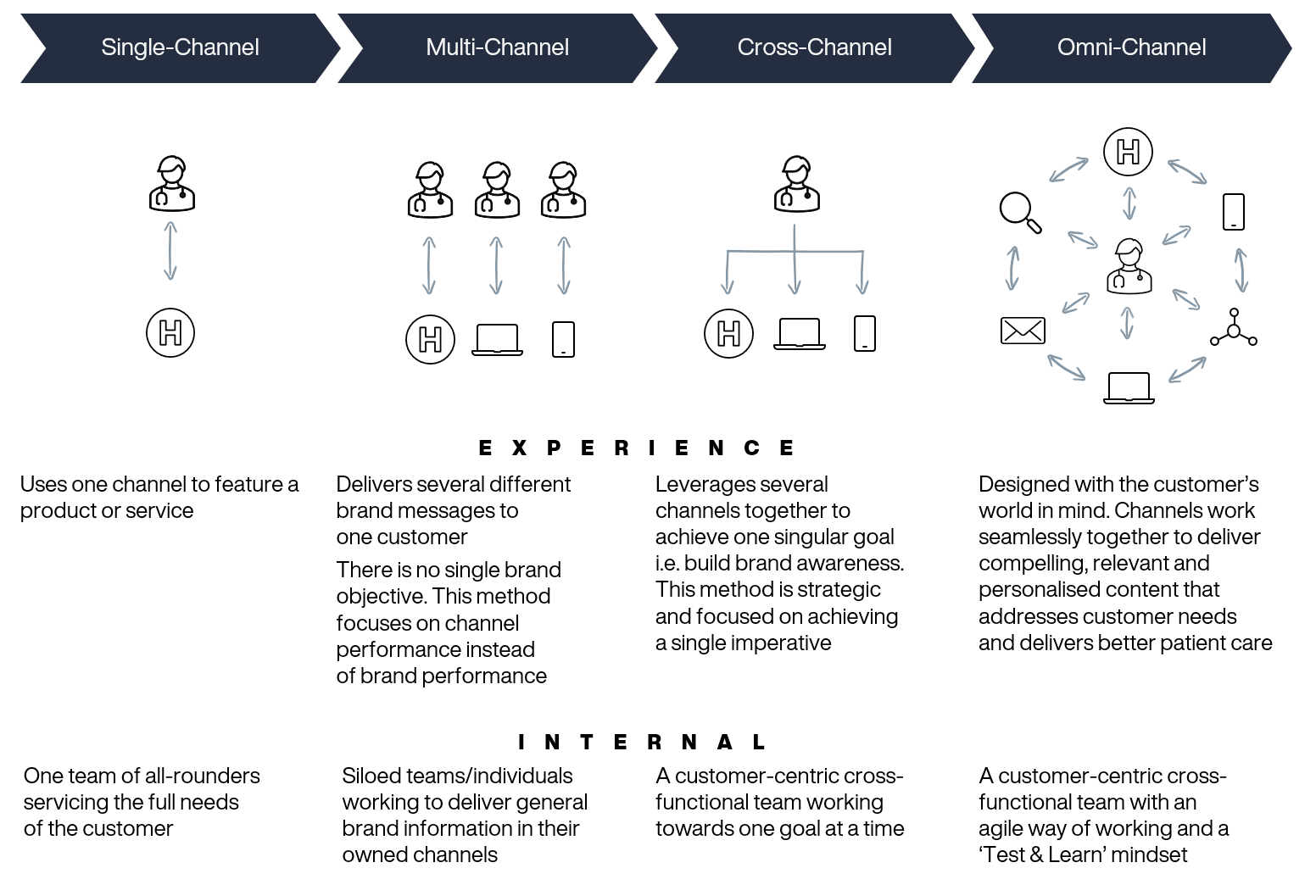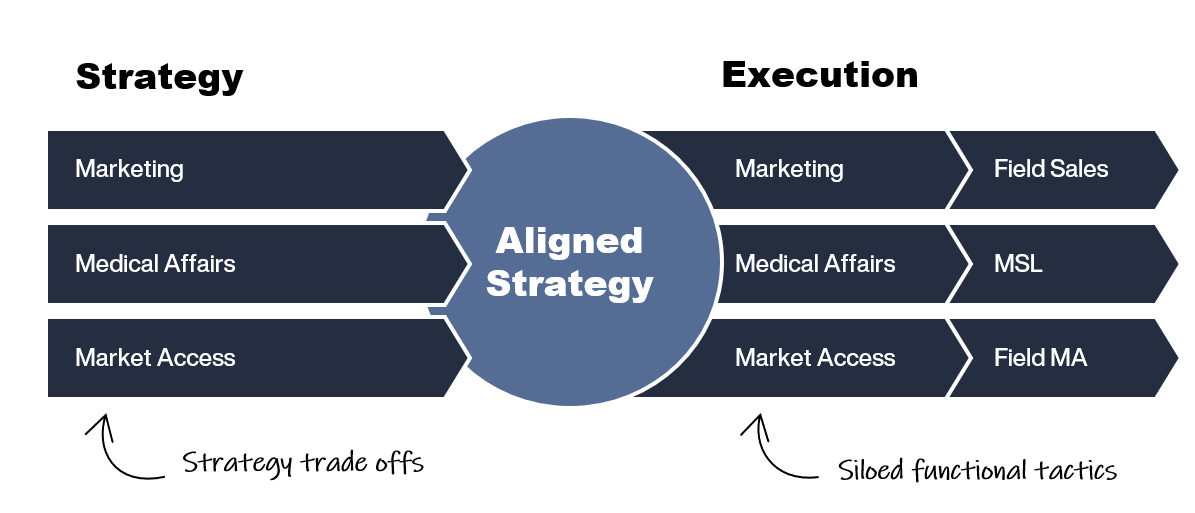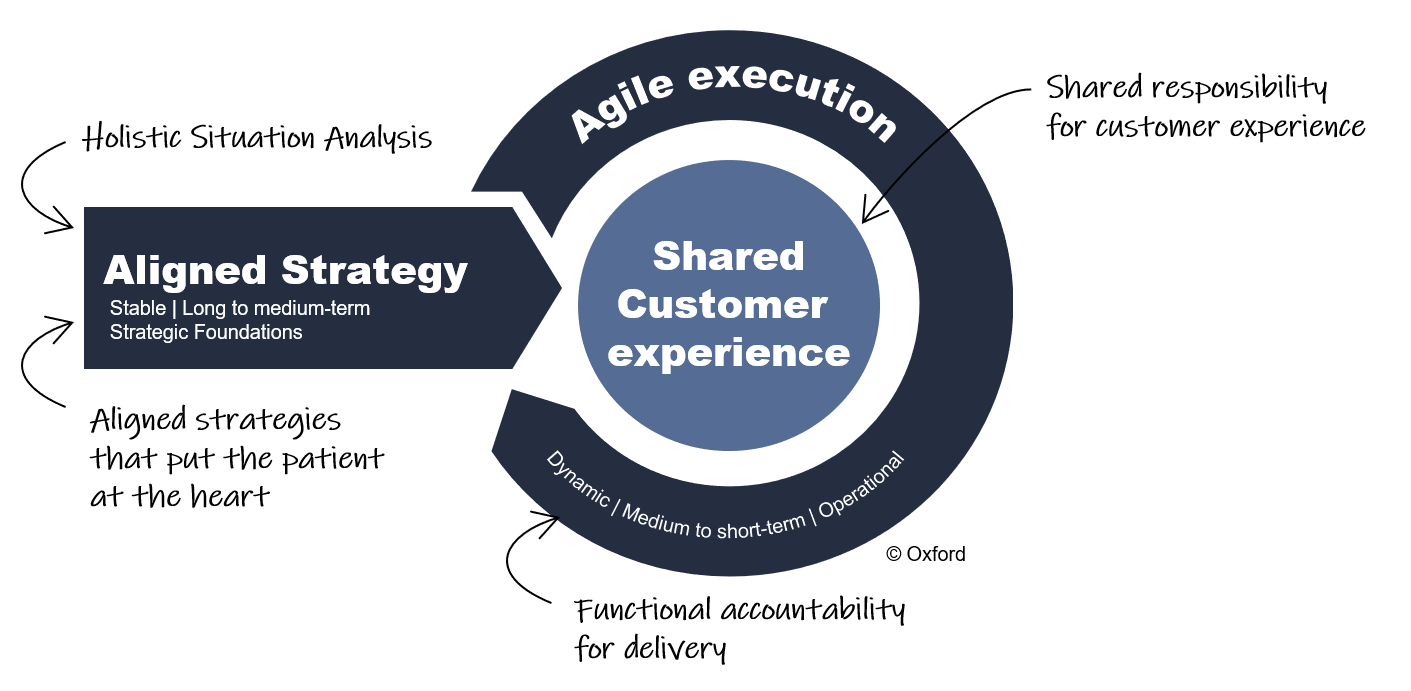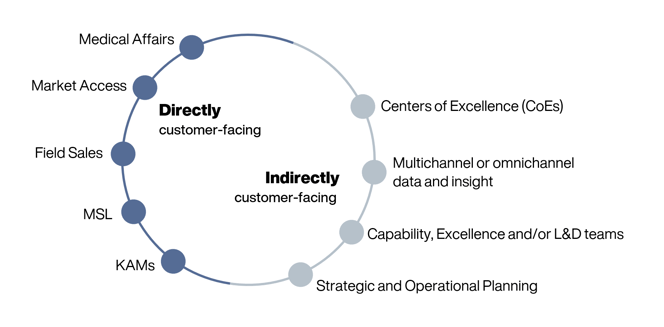Omnichannel: why pharma needs to radically rethink its approach to planning
Omnichannel has redefined customer engagement in pharma
Omnichannel engagement means reaching and engaging with customers on their own terms, leading to a better customer experience by providing the right content to the right people at the right time. This requires integration along the customer journey across all possible channels and touchpoints (traditional and digital channels) and looks at how to create the best experience as customers move between them.
How omnichannel works in practice within Healthcare

Pharmaceutical organizations making transformational changes are investing at least 20% of their EBITDA on digital and analytics programs alone
Source: Rewired pharma companies will win in the digital age, McKinsey June 2023
So why are so many organisations struggling to benefit from the investment they’ve made in technology and data?
Really embracing omnichannel customer engagement means putting the customer first – including throughout planning.
Linear planning focuses primarily on a strategic alignment
We see many organisations, with great intent, trying to knit together functional workstreams (in which people have invested a lot of time and energy) too late. Much as the approach to engagement has evolved from single channel to multichannel to omnichannel – planning needs to evolve too.
Before omnichannel, most organisations took a very linear approach to planning, with functions aligning primarily on the high-level strategy.
As multichannel and now omnichannel have become embedded, alignment has grown to include customer experience – but for many organisations this is still within functional swim lanes (so the marketing and sales customer experience is often designed and delivered separately from the medical customer experience) or brand swim lanes, with brand needs put before customer needs. So, whilst better, this still does not deliver a joined-up, seamless experience for the customer. Trying to join together separate customer journeys during operational planning leads to frustration and wasted resources.
‘Strategic Handshake’ Approach to Business Planning

Integrated planning aligns strategy and customer experience
To deliver true omnichannel, organisations need to think about the customer from the start and throughout – with holistic situation analyses, aligned, customer-driven strategies and function-agnostic experiences, delivered by agile, multi-disciplinary teams from the start and throughout.
Establish a team across functions and locations that puts the patient at the heart, overcoming silos and ensuring a common focus and cohesive actions to engage the relevant healthcare professionals who are key in improving the patient experience, quality of life and, where possible, outcomes. Aim for:
‒ aligned strategy that puts the patient at the heart
‒ seamless and shared responsibility for the customer experience
‒ functional accountability for delivery
Aligned Strategy and Experience approach

Integrated, multi-disciplinary teams need directly and indirectly customer-facing people
Clearly not all team members need to be involved at all points.
- A clear RACI helps to guide decision making
- Think about the mindset shifts needed to really change behavior

5 critical principles for integrated business planning
|
1 |
Align people around a focused strategy. Root the strategy in improving the patient experience and quality of life. This creates a ‘tight brief’ for agile execution, allowing teams to flexibly respond to a consistent strategic direction, as things change (learnings, internal and external shifts). Watchout |
|
2 |
Ensure a clear line of sight. The link between market opportunities, to strategic options, to portfolio and brand strategies, to the customer experience should be clear. Ruthlessly remove anything that doesn’t help to deliver and use data effectively to help people make the right evidence-based decisions. For example, if the success of a new launch relies on converting x% of physicians, but current field coverage is only half of that, and even then the launch is not seen as a priority….how will you design an experience to reach those physicians? Watchout |
|
3 |
Focus on decisions, not templates. Simplicity is key: a few core questions that prompt teams to have the right discussions and make the right decisions at the right time. Watchout |
|
4 |
Make it a priority. Allow time and budget for embedding. Be clear on the ask of people, build skills through simple, snackable content that focuses on the key things they need to do (don’t boil the ocean), equip leaders to be clear on their expectations, and questions to ask to drive the right behaviours in their teams. Watchout |
|
5 |
Start slow and scale. Moving to omnichannel can be overwhelming for the most confident of organisations. Encourage teams to start small and build from there. Better to get an aligned customer experience that utilises 3-4 channels really well, with data driving the next best action, and clear KPIs and indicator metrics, than deliver an OK experience with 10, lots of dead ends and no data. Watchout |
Great Omnichannel Transformation in Pharma
Speaking to NEXT Pharma, Hicham Naim, Vice President, Head of Strategy & Transformation at Takeda Pharmaceuticals said:"In some parts of the value chain, a lot has been done. If you take R&D, we’re talking about AI Discovery…or manufacturing supply chain industry 1.0, a lot has been done there, for example at Takeda, the connected IoT – all the connected equipment, using AR, VR to train people in quality labs or manufacturing – a lot has been done. But not enough has been done in customer engagement. Some of this is because of the regulatory compliance constraints of the industry, but also there’s an element of risk aversion – we say ‘we can’t do that, because we are in pharma’." |
In true integrated business planning, a seamless customer experience is the end-goal and the ‘unlock’ to effective multi-disciplinary teamwork. Great experience planning is critical in delivering the strategy.
About the author
Lisa Davies is a member of Oxford’s Healthcare leadership team. She specialises in helping organisations to build high performing teams that deliver business results and encourage individuals to maximise their potential.
Want to learn more about best practice omnichannel planning in Pharma?

Share this
You May Also Like
These Related Stories

What is organisational design?

Curiosity: A Superpower for Growth

.png?width=657&height=57&name=OXFORD%20LOGO%20(1).png)
No Comments Yet
Let us know what you think